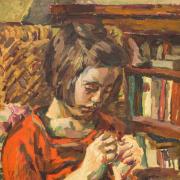Many of us want to make a fresh start in January, but for some this can be hampered by seasonal blues. This might be just an "after Christmas" slump but for some of us it literally is the time of year. Dr Tiziana Camilleri tells us more
Up to 1 in 50 of us suffer from SAD (seasonal affective disorder). Some people may be sceptical of this diagnosis but many studies have been done which show that between the months of September and April people do suffer from this. Unlike depression, however, once spring comes the symptoms ease away and for this diagnosis to be made officially, the symptoms must occur over two consecutive years.It has been shown that any natural sunlight, even on an overcast day in the middle of winter, may be the remedy for this condition and a one-hour walk can be enough to help the symptoms. People in Sussex are relatively spoilt on where we can do this due to the beautiful scenery that we have around us, be it by the sea or on the South Downs.The symptoms of SAD are typically feelings of low mood, loss of enjoyment and interest, tearfulness and sadness and lacking in energy and irritability. It can get so serious that some people start to develop suicidal thoughts. Typically those suffering with SAD tend to have atypical features of depression, that is they tend to sleep more, as opposed to having problems sleeping and tend to crave sweet foods and put on weight, as opposed to having a reduced appetite and weight loss. It can be very debilitating for some people but once spring starts the symptoms tend to disappear quickly, in some cases within a week, sometimes leaving people feeling abnormally “high”.The reason why people develop SAD is thought to be due to an imbalance between the hormone melatonin (which is produced during darkness to make you more sleepy) and the brain transmitter serotonin, the lack of which is one of the causes of depression. In SAD it is thought that due to reduced hours of daylight there is an increased amount of melatonin and a reduced amount of serotonin. There is also some evidence that there is a genetic predisposition to developing SAD and about 1 in 7 people who have a first degree relative (mother, father, brother or sister) affected by it will also suffer.Many people are aware of light-therapy which can be used to help manage this condition. The light source which is used is roughly 10 times more intense than that of a normal lightbulb. For this to work effectively, light-therapy should initially be used in the beginning of autumn, when symptoms start. The light source is positioned 2 to 3 feet away from the person and depending on the strength of the light source, the duration of the treatment varies. This can range from 30 minutes to 3 hours and can be done for example whilst eating, working or reading. You shouldn't look directly into the light source but neither should your eyes be obscured from it by means of sunglasses for example, as it works by the light hitting the back of your eyes. These light sources do not contain any more UV light than a normal lightbulb so they are not bad for you and there is no chance of getting a suntan from them either!Dawn simulators may also be used as an alternative, which work by slowly increasing the room light, and start around 60-90 minutes prior to the time that you would normally wake up.It should be noted that only specifically designed light sources should be used to treat SAD. For a range of these you can look at the SAD Association website for suppliers, www.sada.org.uk, which is a West Sussex based charity for people suffering with SAD.Most people find a benefit from this type of treatment within 3-4 days, although for others it can take 4-6 weeks. Unfortunately for some it has no benefit at all. There are some other therapies that can be used such as cognitive behavioural therapy (CBT), which is a psychological treatment to help change the way you think, feel and behave to enable you to manage these symptoms. Antidepressants may be used and can be taken for the time period when the condition affects the person and does not need to be taken all the year round, but this should be discussed on an individual basis with your GP.


























